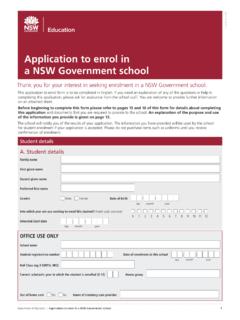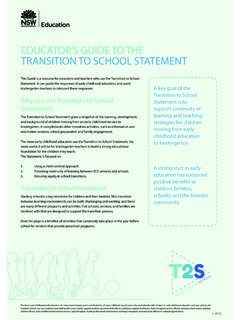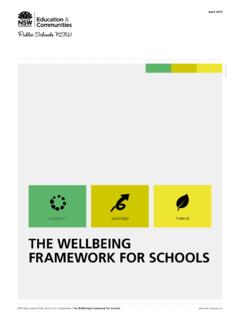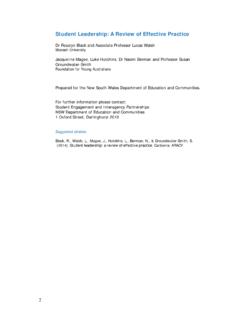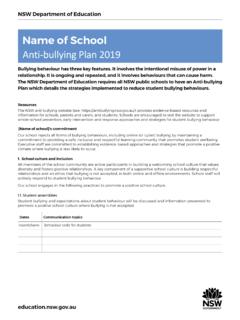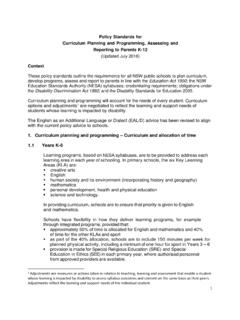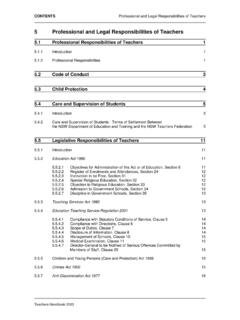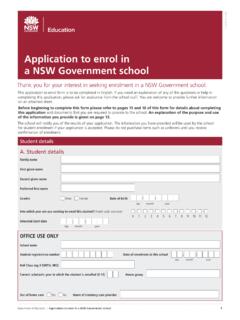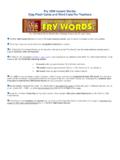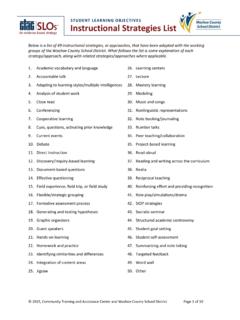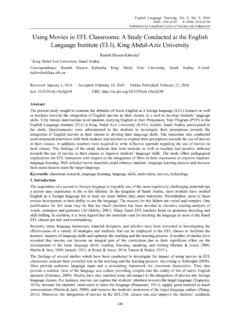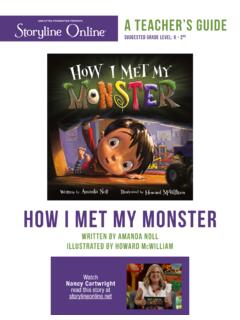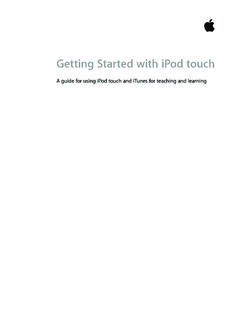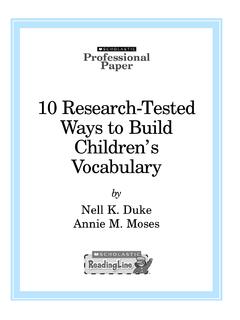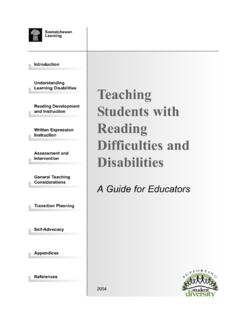Transcription of Improving reading comprehension
1 NSW Department of EducationImproving reading comprehensionYears 3 to 8A guide to support conversations about evidence based practice in readingLiteracy and numeracyMarch 2021 Improving reading comprehension Years 3 to 8 2 ContentsPurpose of the resource 3 reading comprehension evidence base 4 Leading to improve reading 6 Phonological awareness and phonics 8 Fluency 12 Vocabulary 15 reading comprehension 19 References 24 Hyperlinks 25 This document is designed for online to page 25 for a list of full URLs for hyperlinked text if reading comprehension Years 3 to 8 3 Purpose of the resourceThe purpose of this guide is to support directors, educational leadership, principals, school leadership teams and teachers to have informed conversations about evidence-based reading instruction in all key learning areas across both primary and secondary school guide can.
2 Assist with an analysis of current practices help to inform planning for school improvement in reading suggest ways to build teacher capacity and understanding of effective reading with explicit classroom practices and professional learning analysisThis guide can be used as part of the situational analysis in the following ways:Looking inward includes analysis of data, such as evidence of staff knowledge and perceptions around reading , and evidence of students current skills in guide should be used in conjunction with a thorough analysis of internal and external measures such as.
3 Best Start Year 7 Assessment Check-in assessment NAPLAN data school-based data National Literacy Learning Progression EAL/D Learning outward includes comparing the school s approach to the teaching of reading with the research on effective reading guide: explains the components of reading instruction describes evidence-based practices for reading instruction describes the roles and responsibilities of all forward includes making decisions in response to information gained in the Looking inward and Looking outward phases.
4 This guide makes suggestions for ways to adapt and improve reading instruction across Years reading comprehension Years 3 to 8 4 reading comprehension evidence baseReading is a complex cognitive process. It requires our brains to make new connections between the parts that were designed to enable us to develop oral language and process visual information. Learning to read requires explicit teaching in order for our brains to make those new connections. The Simple View of reading (Gough and Tunmer, 1986) suggests that reading comprehension is the product of two sets of skills: decoding and linguistic comprehension .
5 Since Gough and Tunmer s original paper, many researchers have provided evidence that measures of decoding and linguistic comprehension each predict reading comprehension and its development, and together the two components account for almost all variance in this ability (Castles, Rastle and Nation, 2018 ).The work of Hollis Scarborough (2001) further developed the Simple View of reading through the use of a rope metaphor with strands of the rope representing the various interconnected components of skilled reading (refer to image below).
6 This f ramework expands linguistic/language comprehension to include background knowledge, vocabulary knowledge, language structures, verbal reasoning and literacy knowledge. Scarborough also expanded the decoding/word recognition component of the Simple View of reading to highlight the importance of phonological awareness, decoding and sight , (2001). Connecting early language and literacy to later reading (dis)abilities: Evidence, theory and practice. In S. Neuman & D. Dickson (Eds.), Handbook for research in early literacy (pp.)
7 97-110). New York, NY: Guilford Press. reading comprehension evidence baseImproving reading comprehension Years 3 to 8 5 Learn more about the reading rope with these videos: introduction to the reading rope upper strands of the reading rope lower strands of the reading researchers (as summarised in National reading Panel, 2000, Rose, 2006 and Rowe, 2005) agree that well-developed skills in both word recognition and language comprehension are critical for skilled reading comprehension . Strength in one area cannot compensate for a deficit in the other area.
8 Scarborough suggests that skilled reading involves the fluent execution and coordination of word recognition and text comprehension (Scarborough, 2001).All teachers need a thorough understanding of how the complex cognitive process of reading develops, and how the many components work together as students read increasingly complex texts skilfully, strategically and critically. reading is required for success in every subject area and so every teacher has a responsibility to develop the general and subject, or discipline-specific, reading skills of their consideration across the curriculumIt is important to remember that even though students may have learnt to read or decode with automaticity in the early years, they are still learning to read as they move through primary school and into secondary school because they are being faced with content, concepts.
9 Texts and tasks that are increasingly demanding. They must continue to be explicitly taught to read in all curriculum Literacy K-12 Policy describes literacy as the ability to understand and evaluate meaning through reading and writing, listening and speaking, viewing and representing. (NSW Literacy K-12 Policy, ).As educators, it is essential to understand that Teachers K-12, across all key learning areas, are responsible for the teaching and learning of literacy skills, knowledge and understandings. (NSW Literacy K-12 Policy, ).
10 This document includes advice for Improving reading in Years 3-8. It is important to note that teachers can differentiate the application of skills and strategies according to stage of learning and complexity of reading comprehension Years 3 to 8 6 Leading to improve readingPrincipals and leadership teams have a pivotal role in driving reading improvement in schools. This guide was developed to support conversations about reading improvement in the context of school strategic drive improvement in reading , a Principal.
